How To Make A Chicken Coop Door: A Step-by-Step Guide
- January 31, 2024
- 1 comment
Having devoted a significant portion of my life to backyard farming, with a particular focus on rearing chickens, I’ve gained a deep appreciation for the critical role played by a well-built and efficient chicken coop door. This component is far more than just a simple entry or exit for the coop; it stands as a vital feature that safeguards the well-being and ensures the comfort of your cherished poultry. In the ensuing review, I plan to delve into the nuances of crafting an ideal chicken coop door.

I will be drawing upon my personal experiences and knowledge, aiming to provide a comprehensive guide that encompasses every essential facet, ranging from the selection of suitable materials to the intricacies of design choices and functionality. My goal is to equip you with the insights necessary to create not just a door, but a gateway to a secure and pleasant environment for your feathered companions.
List on How To Make A Chicken Coop Door List:
- Planning and Designing
- Gathering Materials
- The Building Door Process
- Installation and Testing
- Maintenance Tips
Why a Good Chicken Coop Door Matters
Understanding the significance of a quality chicken coop door is fundamental in poultry care. Primarily, the aspect of security stands paramount. Chickens, being naturally vulnerable to predators such as foxes, raccoons, and even neighborhood dogs, require robust protection. A well-designed door not only acts as a formidable barrier against these threats but also provides peace of mind for the chicken keeper.
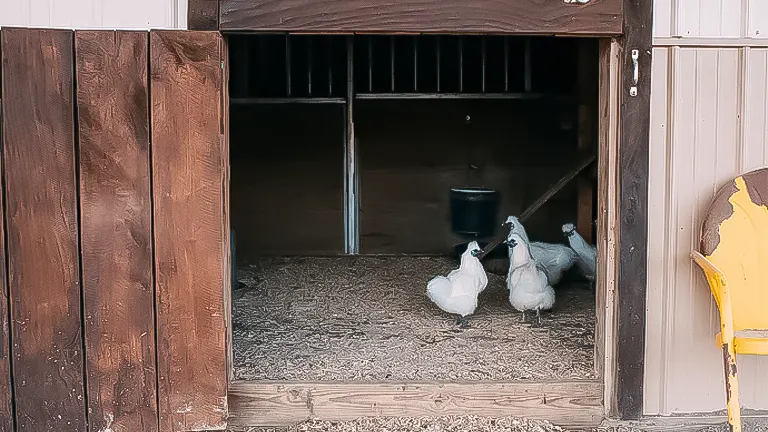
It’s not just about keeping predators out; it’s also about ensuring that the chickens don’t wander off and put themselves in harm’s way. Moreover, the design of the door plays a critical role in safeguarding the chickens from harsh weather conditions. A sturdy, weatherproof door keeps the coop dry and insulated, ensuring a comfortable habitat for the chickens regardless of the external environment.
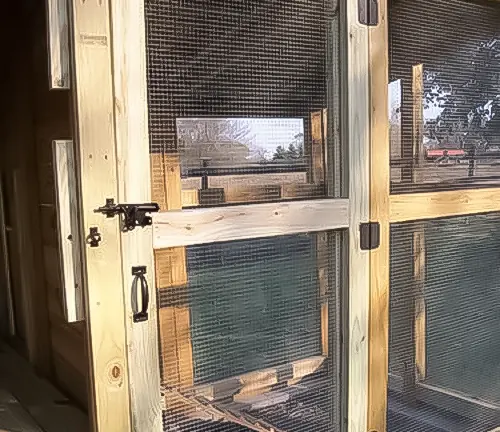
On the other hand, convenience is another significant factor. A chicken coop door that is easy to operate facilitates a hassle-free routine for the caretaker. Whether it’s a simple latch system for manual doors or a more advanced automated opening mechanism, ease of use can drastically reduce the time and effort involved in daily chicken-tending tasks.
This convenience becomes especially valuable during early morning hours or inclement weather conditions when handling a cumbersome or poorly designed door can be quite frustrating. In essence, a good chicken coop door is a blend of solid security features and user-friendly design, both of which are essential for the well-being of the chickens and the ease of their caretakers.
Step-By-Step on How To Make A Chicken Coop Door
Step 1: Planning and Designing
The first step in my journey was meticulous planning and designing, a phase where creativity met functionality. I envisioned a door that struck a perfect balance between sturdiness and simplicity. I spent hours sketching various designs, each iteration improving upon the last.

Critical considerations included the size of the door, ensuring it was large enough for my chickens to comfortably pass through but not so large as to waste materials or space. The choice of materials was pivotal – I weighed the pros and cons of different woods and metals, considering factors like durability, weight, and resistance to weather.

The decision between a manual or automatic door was particularly challenging. While an automatic door offered convenience, especially for those early mornings or late evenings, I ultimately chose a manual sliding design for its reliability and ease of maintenance. This design, I believed, would best withstand the test of time and daily use, providing a secure and functional entry point for my coop.
Step 2: Gathering Materials
Once the design was finalized, the next crucial step was gathering the right materials. I embarked on a quest to find the perfect blend of quality and functionality. The wood needed to be tough enough to withstand the elements yet light enough to ensure smooth operation.

I chose a weather-resistant wood, known for its durability and resistance to rot and insects. For the sliding mechanism, I invested in a high-quality rail and roller system, ensuring a smooth and effortless glide of the door. This decision to prioritize quality over cost was driven by the understanding that a chicken coop door is a long-term investment.

Cheaper materials might save money upfront but could lead to frequent repairs or replacements down the line. I was determined to build something that would stand the test of time and offer consistent performance, safeguarding my chickens with reliability.
Step 3: Building Door Process
The actual building of the door was both a challenging and rewarding endeavor. Precision was key; every measurement had to be exact to ensure a perfect fit and smooth operation. The initial assembly saw a few misalignments, requiring patience and persistence to rectify.
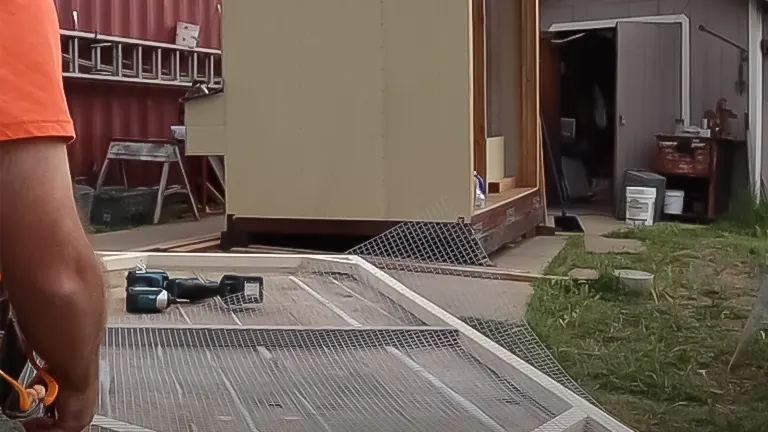
Careful attention was paid to the sliding mechanism – it had to be smooth and effortless, yet secure enough to not be jostled open by strong winds or curious predators. I incorporated a sturdy locking system, a critical feature to prevent unwanted access.
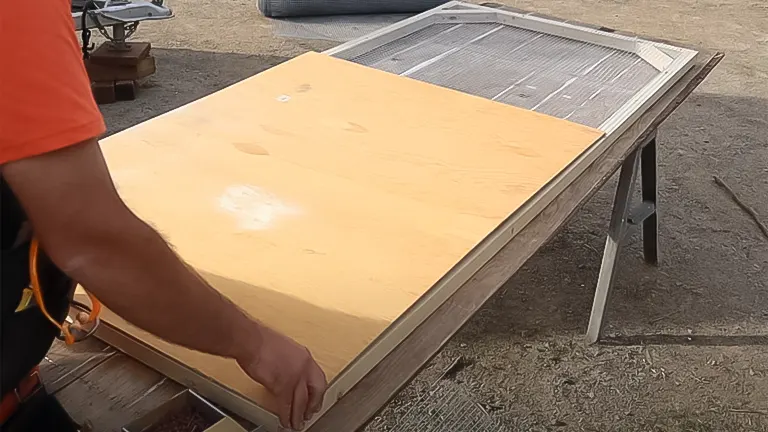
The process of aligning, adjusting, and testing the door was iterative, requiring several adjustments to achieve the desired functionality. This phase of the project was not just about building a physical structure but about crafting a safe haven for my chickens, combining functionality with security.
Step 4: Installation and Testing
Installing the door onto the coop marked a significant milestone in the project. This step required precision and care to ensure the door was not only well-aligned but also integrated seamlessly with the coop’s structure. I methodically checked and rechecked the alignment, making sure the door slid open and closed smoothly without any snags or gaps that could compromise security or functionality.
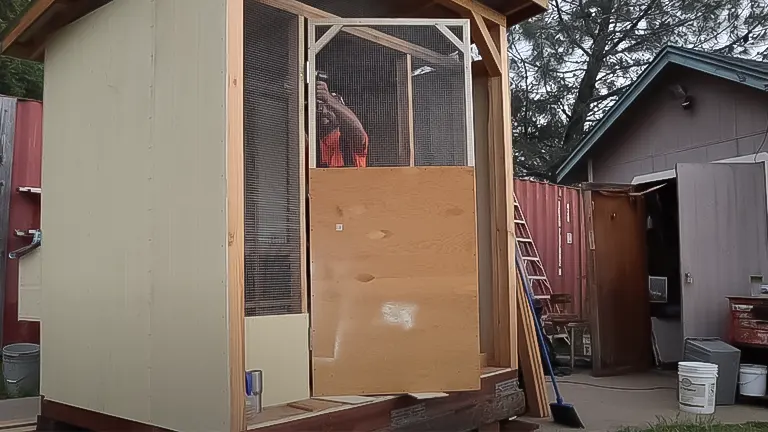
Testing the door’s operation was critical – it had to open and close with ease, yet remain securely shut when needed. I simulated various scenarios, from windy conditions to potential predator attempts, to ensure the door could withstand real-world challenges.
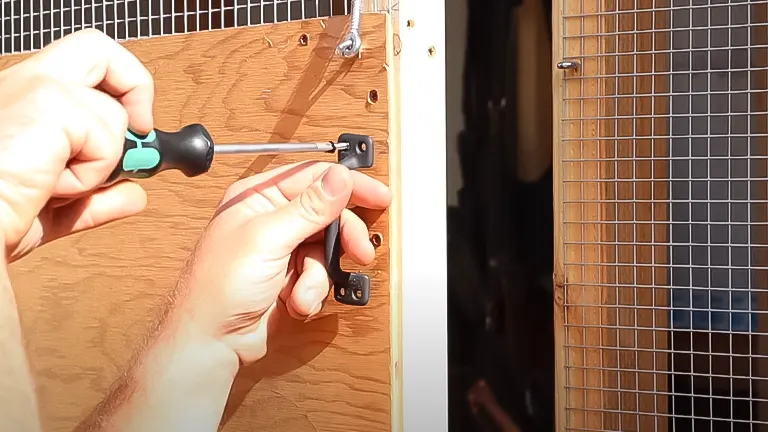
Observing my chickens approach and investigate their new entryway was incredibly satisfying. It was not just a testament to the door’s functionality but also an indicator of their comfort and safety, which was my ultimate goal.
Step 5: Maintenance Tips
Maintaining the door is crucial for its longevity and continued performance. Regular inspections became a part of my routine. I would check for any signs of wear and tear, particularly focusing on the sliding mechanism and the lock.

Ensuring these parts remained in top condition was essential for the door’s functionality and the safety of the coop. Seasonal maintenance was also important. I applied a weatherproof sealant to the wood annually to protect it from moisture and extreme temperatures, preserving its integrity and appearance.
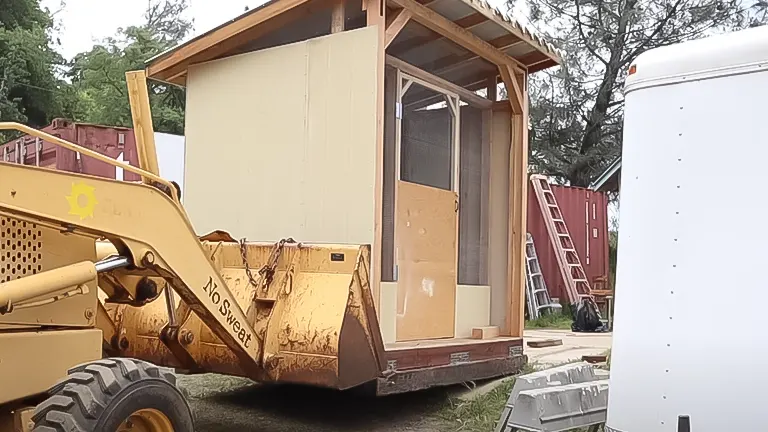
Keeping the sliding track clean from debris and ensuring the moving parts were well-lubricated prevented any operational hiccups. This proactive approach to maintenance not only extended the life of the door but also provided continuous assurance that my chickens were safe and secure in their home.
Determining the Ideal Size for a Chicken Coop Door
When deciding on the size of a chicken coop door, it’s essential to consider the breed and size of your chickens. If your flock includes a range of breeds, especially larger ones, it’s advisable to choose a door size that comfortably accommodates the biggest bird, typically a rooster.
For those raising smaller poultry like bantams or quail, a door measuring 4 inches in width and 6 inches in height will generally suffice. However, if you’re tending to larger breeds, such as Brahmas or Jersey Giants, a more appropriate door size would be 12 inches wide and 14 inches tall.
It’s a common tendency to build coop doors larger than necessary. In hotter climates, this oversized approach can aid in ventilating the coop, helping to keep it cool. Conversely, in colder regions, a smaller door is beneficial. A snug door that chickens have to squeeze through assists in retaining the coop’s warmth, crucial for their comfort during chilly weather.
Optimal Placement of the Chicken Coop Door
The placement of the chicken coop door can significantly impact the internal environment of the coop. Positioning doors on the south, east, or west sides of the coop can invite sunlight inside. This is not just about lighting; sunlight has been recognized by reputable researchers, including those at the University of Oregon, for its ability to naturally eliminate harmful bacteria.
Doors located on these sides also contribute to warming the coop throughout the day. On the other hand, a door on the north side tends to limit the amount of sunshine entering, which can keep the interior slightly cooler, an aspect worth considering in warmer climates.
For those in cooler climates, it’s important to avoid having the door face the direction of prevailing winds, as this can lead to a significant drop in temperature inside the henhouse. In contrast, in hotter regions, a door facing the wind can bring a much-needed cooling breeze.
Additionally, when designing your chicken coop, pay attention to the placement of nesting boxes and roosting perches. It’s practical to place these elements in a way that prevents you from having to reach under the birds to close the door. This positioning minimizes the likelihood of getting an unwanted ‘gift’ from your fowl on your arms, back, or head. Also, consider the height of these features to avoid any head-bumping incidents.
Pros and Cons Based on Experience
Pros
- Security: The solid wood construction offers excellent protection against predators.
- Durability: Treated wood withstands harsh weather conditions.
- Space Efficiency: The sliding mechanism is perfect for smaller coops.
Cons
- Maintenance: The rails and rollers need regular cleaning and lubrication.
- Installation Complexity: Setting up the sliding mechanism requires more precision than a simple hinged door.
Decision-Making Factors and Recommendation
In my experience, the most crucial factors for a chicken coop door are security, ease of use, and durability. The sliding wood door I built scores high in these areas, providing a balance between functionality and maintenance needs. The choice of materials and design significantly impacts these factors.
For those looking to build a functional, secure, and durable chicken coop door, a sliding wooden door is an excellent option. It offers a great balance of security and ease of use, especially in limited spaces. Ensure you choose treated wood for longevity and invest in quality hardware for the sliding mechanism.
Related Articles:
- Best Bedding For Chickens
- Best Safe Chicken Coop Heater
- 8×8 Chicken Coop Plans
- Turning a Shed Into a Chicken Coop
- How to Make a Chicken Coop Out of Pallets
- Best Sand for Chicken Coop
- How To Insulate a Chicken Coop
- How To Heat a Chicken Coop
- How To Keep Water from Freezing in Chicken Coop
- How to Build a Chicken Coop
- How To Build Chicken Nesting Boxes
Final Concluding Thoughts
In conclusion, building a chicken coop door is more than just a carpentry task; it’s about creating a safe haven for your chickens. By focusing on key factors like material durability, design efficiency, and ease of use, you can construct a door that meets all your poultry needs. Whether you choose a sliding or hinged door, remember that the safety and comfort of your chickens are paramount. Happy building!
Frequently Asked Questions
- What materials are best for constructing a chicken coop door?
Explore the durability, weather resistance, and safety of various materials like wood, metal, and composite. - How do I determine the right size for my chicken coop door?
Guidance on sizing the door based on the breed and size of your chickens, and the overall size of your coop. - Should I choose a sliding or hinged door for my chicken coop?
Discuss the pros and cons of sliding versus hinged doors, including space considerations and ease of use. - What tools and equipment will I need to make a chicken coop door?
List of necessary tools and materials for constructing a coop door, including any safety equipment. - How do I ensure the chicken coop door is predator-proof?
Tips on making the door secure against common predators, like using strong latches and reinforcing the frame. - Can I automate the chicken coop door for opening and closing?
Information on available automatic door systems and how to integrate them into your coop design. - What are the best practices for insulating the coop door in colder climates?
Advice on materials and techniques for insulating the door to maintain warmth in the coop during winter. - How do I maintain and care for my chicken coop door?
Tips on regular maintenance, cleaning, and checks to ensure the door remains in good condition. - What design considerations should I keep in mind for ease of use and functionality?
Suggestions on ergonomic designs, placement relative to nesting boxes and perches, and accessibility for daily use. - Are there any legal or zoning considerations I should be aware of before building my chicken coop door?
Overview of potential zoning laws or regulations that might affect the construction and placement of your chicken coop and its door.
We’d love to hear from you! Share your personal experiences and insights about building your own chicken coop door in the comments section below. Your practical tips, creative ideas, and lessons learned could greatly assist fellow enthusiasts in constructing their perfect chicken coop door. Your contribution could be the key to helping others make informed, efficient, and effective choices for their feathered friends!

Edward Smith
Forestry AuthorWoodworking is about more than crafting; it's a harmonious connection with nature, mastering tools, and preserving our environment. I'm here to share my knowledge and experiences with you, forging a future where we can embrace wood's beauty and utility while safeguarding our forests' health and diversity.







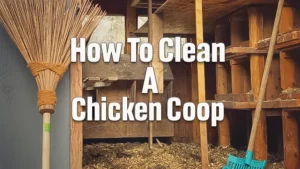




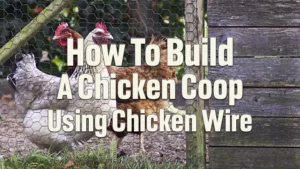
I would like to build a chicken coop for free range chicken.
Seabelo
February 1, 2024 3:37 pm